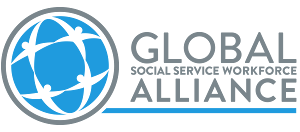You are here
Best practices in programming for child victims of trafficking and commercial sexual exploitation
A child rights-based approach (CRBA) is grounded in general human rights principles and standards as well as the UN Convention on the Rights of the Child and is integral to designing programs and policies that affect children. It echoes the needs and rights of children as awarded to them by virtue of being children and human beings.
In this report, Child10 gathered best practice examples on how to in integrate the CRBA in programming through input from the Child10 2021 Awarded Member Organizations working directly with child victims and children at risk of commercial sexual exploitation and trafficking throughout Europe.
The examples in the best practice report can be summarized in a 10 point checklist to assist in improving the integration of CRBA in all activities related to ending trafficking and sexual exploitation of children and youth. Essentially, adherence to CRBA ensures that no child is left behind and that the rights of all children are respected and upheld including special attention to guarantee that individual characteristics that might make some children more vulnerable than others, such as, gender, ethnicity, disability, legal status etc. are taken into account as well as ensuring child participation throughout the process when designing and implementing interventions affecting them.
The ten examples below are non-exhaustive and centre around best practices in direct services, outreach and identification of child victims that have been discussed in Child10 workshops during 2021.
- Map stakeholders and contribute to enhanced collaboration and coordination between various stakeholders and service providers in order to ensure that all children have full access to all their survival, development and protection rights;
- Work with the child’s support system, such as family members, wherever possible;
- Allocate resources for proactive identification of child victims;
- Have child friendly policies in designing and implementing interventions and building trust;
- Consider age and maturity of children in programs;
- Employ non-formal channels where reaching children through formal channels is not possible;
- Ensure a gender sensitive approach in all programming;
- Give special attention to groups of children with increased vulnerability – for example children belonging to minorities, child migrants, children with disabilities etc;
- Promote meaningful participation and involvement of children and youth;
- Integrate a survivor perspective and amplify survivor voices in both direct service programs and outreach activities.
